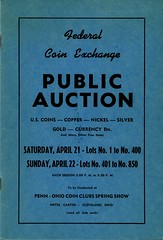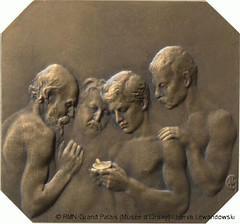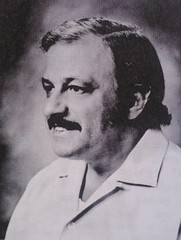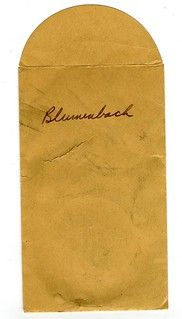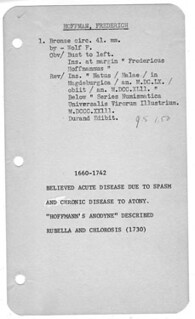
PREV ARTICLE
NEXT ARTICLE
FULL ISSUE
NOTES FROM E-SYLUM READERS: JANUARY 6, 2013 Web Site for Early Coins of Myanmar (Burma) Book My father just published a book that appeared on your blog The E-Sylum. For his birthday, my brother and I created a website around that book. It can be visited at www.earlycoinsofmyanmar.com . As you will see, the site is still in progress. But we would be still grateful, if you could mention it in your next post.
Done!
-Editor
To read the earlier E-Sylum article, see:
NEW BOOK: THE EARLY COINS OF MYANMAR (BURMA)
(www.coinbooks.org/esylum_v15n50a03.html)
Memphis Speakers Series Call for Papers
Memphis is the paper money speaking event of the year! Be there with your great presentation! We invite presentations on any fiscal paper or fiscal paper tie-in topic. We will have a packed program. Deadline for submissions is April 1st so we have adequate time to organize the program and to send out press releases advertising your talk. Talks are scheduled on the hour throughout the show. Each talk is allotted 50 minutes, which includes time for questions.
For more information, contact
peterhuntoon@embarqmail.com
.
More Unlisted Federal Coin Exchange Auction Catalogs
I have two Federal Coin Exchange auction catalogs not listed in Gengerke:
7 - 31 - 49 309 Lots 5 pages
7 - 28 - 53 401 Lots 7 pages
This will fill a few more holes in the sequence of catalogs.
Regarding the date of the Federal Coin Exchange auction, Bruce W. Smith writes:
This reminded me of an amusing incident in my younger days. In the early 1980's, I published a journal on far eastern numismatics called East Asia Journal. In one issue I decided to run a small auction of coins I had for sale. The magazine only came out quarterly (actually it came out irregularly), so I chose a closing date that seemed appropriate. But there were delays, so I kept moving the date a few days farther and a few days farther. When the magazine finally came out, the closing date ended up at February 30th. Someone from the Netherlands wrote to say -- perhaps tongue in cheek -- that they don't have a February 30th in Europe. Of course, he was right.
To read the earlier E-Sylum article, see:
FEDERAL COIN EXCHANGE CATALOGUE MYSTERY SOLVED?
(www.coinbooks.org/esylum_v15n54a11.html)
Comments on the Fortress Paper Anticounterfeiting Article
The article about Fortress Paper has several problems. Crane does not print US currency, and the $5 note has never used color-shifting ink - it's too expensive. Also, the $5 is hardly the only US note to have an "embedded watermark." What the $5 has now is a watermark that actually tells you that the note is a $5 note - no longer a portrait of Lincoln.
That makes it more expensive for counterfeiters who scrub the ink from a genuine note to get a currency-paper substrate - they now have to use a $10 note or higher to get a portrait watermark to use for their $50 or $100 fake. What they have done instead is use $1 notes and print 1988 or earlier $100 images on them - notes that old don't need even the polymer thread, let alone a watermark, OVI-ink, or any of the other current security features.
Crane's "Motion" technology is already in use in several countries (with different images in the thread than the US notes will use). I bought a recent Mexican note to show this feature to my Summer Seminar students. I'll be looking for the new Moroccan note to see how its features work.
To read the earlier E-Sylum article, see:
DURASAFE COMPOSITE BANKNOTE PAPER ANNOUNCED
(www.coinbooks.org/esylum_v15n54a15.html)
Van Arsdell's Website on Celtic Coinage
I like the way Bob Van Arsdell's site on Celtic coinage works, but why aren't the coins in color?
Bob Van Arsdell responds:
One answer to the question "why aren't the plates in color?" is that no one has color images of the ca. 1000 types known. Many are locked up in collections inaccessible to the public, and some types are so rare, they haven't even been seen for decades. To capture 1000 color images from coins spread across the globe could be a lifetime's work in itself, and remember if you can't find one image, you can't complete the catalogue.
This should pose a warning to anyone contemplating a new book project – often the most difficult part of writing a catalogue for an obscure series is finding coins and obtaining pictures. Most people would think the background research is the tough part – it isn't, it's assembling the plates.
The question also resurrects an old debate about whether coin plates should even be in color in the first place. Over the years, the debate has fallen on the side of color. It certainly makes coins easier to sell if there are color plates in auction catalogues, that's why auction houses prefer them. Auctioneers also have the coins in their possession, so obtaining color images is easy. Furthermore, using color is no longer the prohibitively expensive proposition it once was. I like color for auction catalogues, and books explaining coins to the general public.
However, there is an persistent tradition in scholarly numismatic publication, especially in Britain, that the plates should be in black and white. This stems from the fact that color can actually get in the way of seeing an image. If you have ever looked at a catalogue with dozens of heavily patinated examples of small bronze coins, you have seen the problem. Dark tarnish on silver coins presents another obstacle to clarity. I believe the British community has the best approach for academic works – black and white promotes interpretation better than color.
To read the earlier E-Sylum article, see:
ELECTRONIC OPTION FOR PLATES IN NUMISMATIC LITERATURE
(www.coinbooks.org/esylum_v15n54a14.html)
King Farouk's Specially-Made Coins
The photo of King Farouk of Egypt surprised me. I have seen many images of him, but all from the 1950's or later or on Egyptian paper money. In those images he is rather fat -- not the good looking guy we see in the photo. He was well known as a playboy; now I see why. Having unlimited funds to buy coins, he particularly liked gold coins. Rumor has it that when he traveled to other countries, he sometimes visited mints, and they sometimes made coins for him -- that is, they would pull out old dies and make coins, some of which might not have existed before.
To read the earlier E-Sylum article, see:
NOTES FROM E-SYLUM READERS: DECEMBER 30, 2012:
More on the King Farouk Photo
(www.coinbooks.org/esylum_v15n54a09.html)
Musée d’Orsay French Medals Exhibit
To read the earlier E-Sylum article, see:
NEW CATALOG: FRENCH MEDALLIC ART IN THE 19TH AND 20TH CENTURY
(www.coinbooks.org/esylum_v15n47a05.html)
More on Chinese Writing
The first line consists of three characters which read: xin qian bi (in modern pinyin romanization). The old Wade-Giles rendering would be: hsin ch'ien pi. In both cases, the first word is pronounced like "shin"; the second like "chee - en; and the third like "bee". Xin means "new"; qian and bi both mean "money."
The second line reads: nu mi si * no wa. Chinese has no "mis" sound, so requires two characters to get that one sound. Chinese has no "v" sound, so "wa" is as close as they can get.
In all cases, these are Mandarin pronounciations. Mandarin is the western name for the national language of China. Now called "putonghua" in mainland China or "kuoyu" in Taiwan, this was originally the dialect spoken around Beijing a few hundred years ago.
There were and still are many local dialects in China. The farther two places are from each other, the less likely people from those places can understand each other in spoken language. Because government officials served in all parts of the country and often rotated to different locations during their careers, the dialect spoken in the capitol was chosen as the official government language. Every official had to learn it.
Today, local dialects are still spoken in China (and Taiwan), but every college student learns the national language. The written language is the same all over China and Taiwan, though in China they have simplified the writing of many characters. Everyone can read it, but they pronounce it differently depending on dialect. One often sees the phrase "written in Mandarin" or "Mandarin characters", but there is no such thing. Mandarin is one of many dialects, and there is no way to "write" Mandarin or any dialect -- except in western letters or phonetic symbols.
To read the earlier E-Sylum article, see:
NOTES FROM E-SYLUM READERS: DECEMBER 30, 2012: More on the Translation of "Nummis Nova"
(www.coinbooks.org/esylum_v15n54a09.html)
More on Angelo Rosato
Martin’s catalog lists 174 elongated tokens issued by Rosato up to that time, most with a mintage of between 100 and 250 examples. Subjects include John F. and Robert F. Kennedy, the Rev. Dr. Martin Luther King, jr., Richard M. Nixon, St. Christopher, the Capitol, Neil Armstrong, Expo 67, Christmas greetings, and of course Rosato’s own “numismatic self-portraits” (advertising tokens). Rosato’s Encyclopedia lists an additional 186 of his tokens. Rosato was still going strong in 1998 when he published a 300-page supplement to the Encyclopedia which listed, among other things, 78 more of his rolled tokens.
To read the earlier E-Sylum article, see:
ANGELO ROSATO, 1921 - 2012
(www.coinbooks.org/esylum_v15n54a07.html)
Numismatic Gaffe in Pearl Harbor Movie
Apropos currency errors in movies, I once saw a movie set in Pearl Harbor just before the attack of December 7, 1941 (I believe it was "Pearl Harbor," released in 2001, but I am not positive now; it might have been the much-earlier "Tora, Tora, Tora.") wherein a character lays a dollar bill on a bar top with the word "HAWAII" clearly visible on the back.
The "HAWAII" notes were, of course, not issued until the Summer of 1942. I am assuming that the prop man was fooled by the fact that the Hawaii ones bore the Series date of 1935.
To read the earlier E-Sylum article, see:
NOTES FROM E-SYLUM READERS: DECEMBER 30, 2012: Numismatic Gaffe in Lincoln Movie
(www.coinbooks.org/esylum_v15n54a09.html)
The Case of the Missing Medals
"Each medal was stored in a yellow envelope with a handwritten subject (all in the same penmanship) and was accompanied by a typed note card with a medal description and a catalog card with the name of the subject and additional information on the importance or relevance of the person to the field. There are more cards and envelopes than medals so I assumed that not all the medals were donated to the library. Out of 30 missing medals many commemorated really big personalities in medicine like Boerhaave, Charcot, Koch, and Leeuwenhoek. Maybe they were sold as more valuable before the rest was given to the library? "
Bob Leonard writes:
I would bet that the thirty missing medals were STOLEN over the years, and no one missed them because they were never cataloged. This is a cautionary note for anyone planning to donate something to an institution that isn't prepared to conserve it and keep it secure. When I attended the University of Illinois many years ago I was shown the coin collection of the (then) World Cultures Museum, and in an envelope marked as holding a Roman gold coin I found a Lincoln cent.
To read the earlier E-Sylum article, see:
QUERY: MEDICAL MEDAL DONOR IDENTITY AND NEW DONORS SOUGHT
(www.coinbooks.org/esylum_v15n53a16.html)
Query: B. Max Mehl’s Radio Broadcasts
Do any E-Sylum readers know if tapes or transcripts exist of Max Mehl’s radio broadcasts, especially concerning the 1913 nickels? And second, were the broadcasts short advertisements or were they longer, similar to a program or what we would now call an “infomercial”?
|

